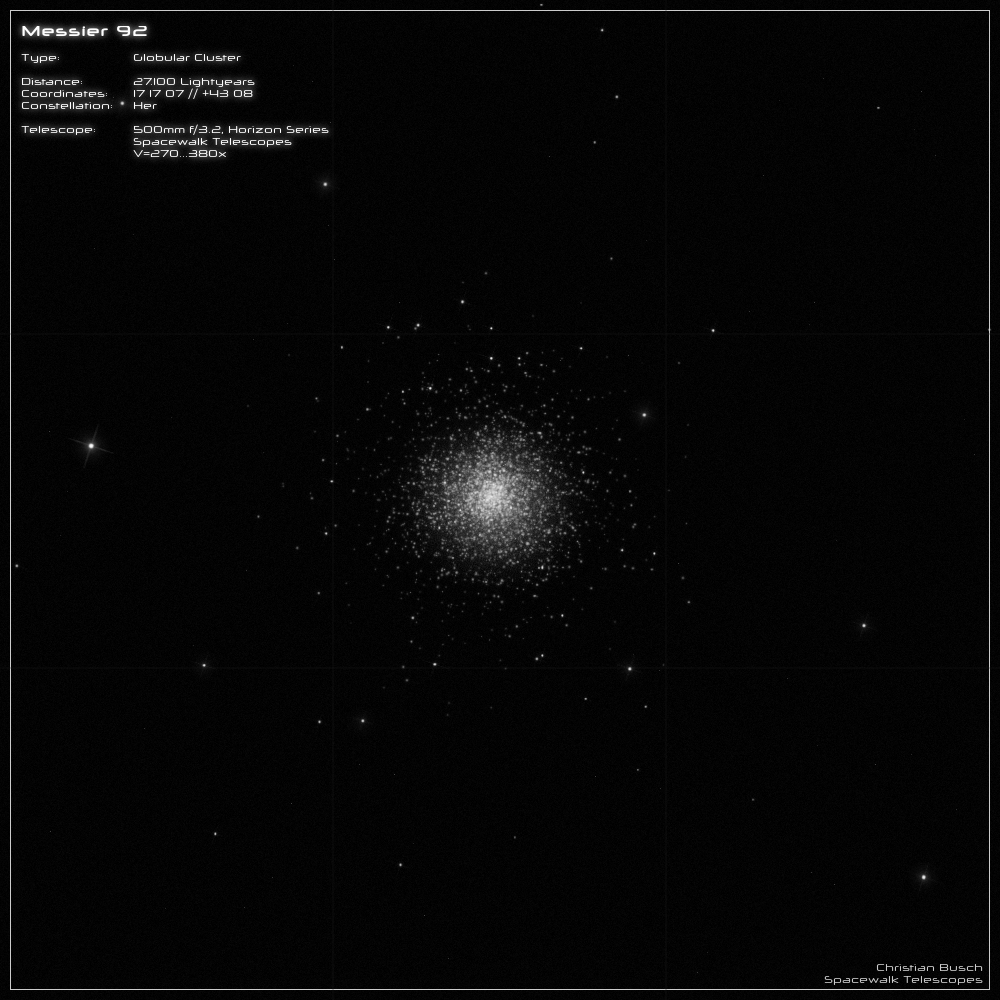Messier 92 - Globular Cluster
The globular star cluster “Messier 92” is the smaller brother of “Messier 13” and, like the latter, it is located in the constellation Hercules. Its apparent
brightness is 6.3mag and it has an angular size of 14 arcminutes. Its distance to Earth is given as 27,100 light-years, although values of 29,000 light-years
can also be found. The cluster is 33,000 light-years away from the galactic center and is also located 16,000 light-years above the galactic plane in the
halo of our Milky Way.
The cluster was discovered in 1777 by Johann Elert Bode, who also found Messier 81. In 1781, “Messier 92” was discovered independently by Charles
Messier, who included it as the 92nd object in his famous catalog shortly afterwards. A few years later (1783), the famous astronomer F.W. Herschel
succeeded in resolving the diffuse object into individual stars.
The diameter of “Messier 92” is 120 light-years. The tidal radius, on the other hand, is calculated to be 390 light-years - this is the distance up to which
individual stars are still gravitationally bound to the cluster. The total mass is given as 290,000 solar masses. The many hundreds of thousands of stars
shine with a luminosity of 190,000 suns and give the globular cluster an absolute magnitude of M= -8.3mag. This makes “Messier 92” only 0.2 magnitudes
fainter than Messier 13. Half of the light emitted comes from the extremely dense core, whose diameter is only 18 light-years (2.2'). The metallicity of the
stars is only 0.6% of that of the Sun, resulting in a very old age of 11+-1.5 billion years.
Due to the precession of the Earth's axis, Messier 92 took on the role of the Pole Star 12,000 years ago and will do so again in another 16,000 years.
----------------------------------------------------------------------------------------------------------------------------------------------
On a clear summer night, the view of Messier 92 in a 20” telescope is simply stunning.
At a magnification of 270...380x, the globular cluster is completely resolved. The core appears very bright and dense. A beautiful object that is in no way
less impressive than its big brother. :)

